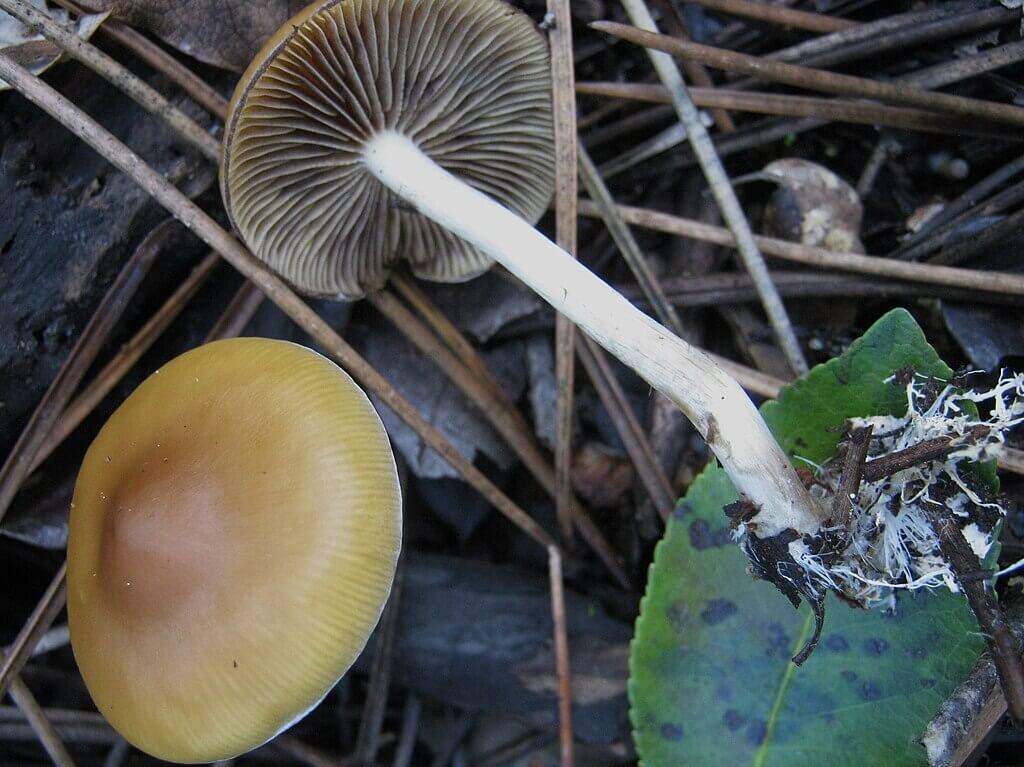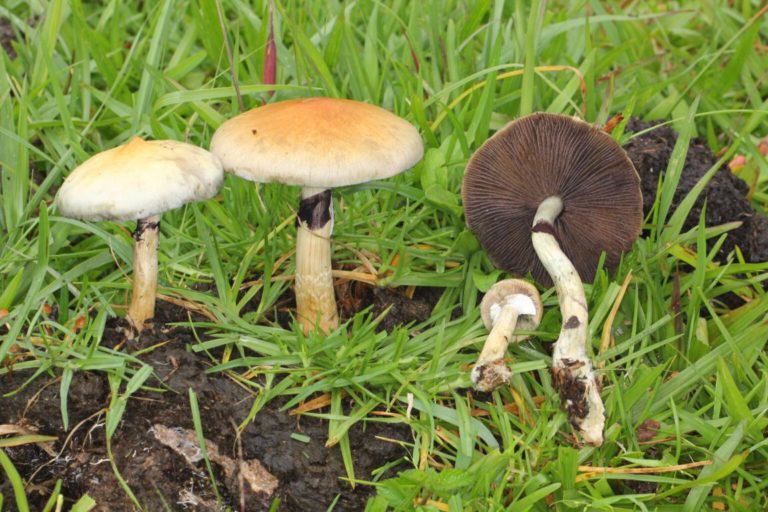What are they and what are their effects?- Alchimia Grow Shop

Psilocybin, the active compound in so-called magic mushrooms, is at the center of an unprecedented cultural and scientific renaissance. Although for decades it was relegated to the realm of the alternative or even the underground, today it occupies a prominent place in research laboratories, specialized clinics, and even in debates about mental health. This natural psychedelic has gained the attention of scientists and therapists for its ability to treat disorders such as anxiety, depression, and post-traumatic stress, with results that often exceed expectations.
In this context, one mushroom in particular has gained almost legendary status: Psilocybe azurescens. Nicknamed “the queen of psychoactive mushrooms”, not only for its exceptional potency but also for its intriguing biology and limited natural distribution. Its high concentration of psilocybin and psilocin, combined with its unique appearance and significant baeocystin contents, make it one of the most sought-after species by both mycologists and psychedelic explorers. Today we tell you much more about this interesting species of psilocybin mushroom. Will you join us?
Psilocybe azurescens: Description and appearance
Psilocybe azurescens is a discreet but unmistakable mushroom for connoisseurs. In its initial stage, its cap has a convex shape, smooth to the touch, with a characteristic caramel-brown color. As it matures, the cap flattens, taking on slightly wavy edges and a lighter shade that may be reminiscent of beige or cream. This cap, which measures between 3 and 10 cm in diameter, sits on a thin, fibrous stem that is white to off-white, with a notable tendency to turn blue when handled. This color change, caused by the oxidation of psilocybin and known as blue lividity, is one of the characteristics that differentiate it from other mushrooms.
Under the cap, its gills are tightly lined, displaying a dark purple-brown hue due to spores. This detail, together with its size and coloration, makes it an easily identifiable specimen for experienced mycologists.
What is Psilocybin and what are its effects?
After decades of neglect, psilocybin is nowadays the subject of dozens of studies and clinical trials all over the world, showing especially promising results in the treatment of conditions like depression or anxiety. In addition to its well-known properties in recreational or spiritual contexts, the news regarding its possible medicinal properties further adds to the interest to this compound.
Psilocybe azurescens habitat
The natural habitat of Psilocybe azurescens is found mainly in a specific strip of the northwestern United States, particularly in the coastal regions of Oregon and Washington (it can also be found in other places such as Germany, Holland, or New Zealand). It grows in soils rich in organic matter, especially on decaying wood remains, such as fallen branches, bark, and tree roots. This mushroom thrives in temperate and humid climates, where constant rainfall and cool temperatures create ideal conditions for its development.
The fruiting season of Psilocybe azurescens begins in the fall, with peak production occurring in late October and early November. It is commonly found in areas close to water, such as riverbanks or damp woodlands. Although its natural range is limited, enthusiasts have managed to successfully cultivate it in other environments that replicate its preferred conditions, thus expanding its availability.
Effects of Psilocybe azurescens and psilocybin content
Psilocybe azurescens is widely recognized as one of the most potent mushroom species known, with psilocybin levels reaching up to 1.8% of its dry weight and significant contents of psilocin and baeocystin. This puts it head and shoulders above more common species such as Psilocybe cubensis (which typically has a concentration of 0.6-0.7% psilocybin) and makes it a choice for those seeking deep, intense experiences.
Its effects begin around 30 to 60 minutes after ingestion and can last between 4 and 8 hours. At low doses, it generates an increase in sensory perception, more vibrant colors, and a feeling of well-being. At higher doses, it is known to induce complex visions, states of deep introspection, and mystical experiences. Due to its potency, it is essential to consume it in moderate doses and a safe environment, especially for those who have no previous experience with psychedelics. In fact, we recommend that you try psilocybe cubensis first before trying azurescens…a little experience will always come in handy so that the experience is rewarding and does not turn into a bad trip!
Growing Psilocybe azurescens
Growing Psilocybe azurescens is considered more complicated than species like Psilocybe cubensis, but its high psilocybin content makes it a desirable target for experienced growers. This mushroom thrives on lignocellulosic substrates, such as hardwood shavings, sawdust, chips, and, as we’ve seen, decaying wood.
The process begins with the inoculation of spores into a suitable medium and an incubation period at constant temperatures of between 21 and 24 °C, where the mycelium spreads and colonizes the substrate. Subsequently, to induce fruiting, it is necessary to replicate the conditions of their natural habitat: cooler temperatures (7-12°C) and high humidity. This stage requires patience, as it can take months to produce significant fruiting.
Despite the challenges, as you can imagine, growing this mushroom is a very rewarding experience for those who manage to master its demands, who are rewarded with specimens of the highest quality and potency.

Harvesting, drying, and storage of Psilocybe azurescens
Psilocybe azurescens should be harvested at the right time to ensure maximum potency and quality. It is generally harvested when the cap reaches its full size and the gills have begun to develop a dark hue due to spore maturation. It is important to handle the mushrooms carefully to avoid damaging them and to preserve their active compounds. The use of sterile latex or nitrile gloves is recommended, or have clean and sanitized hands to prevent contamination and maintain the hygiene of the process.
Once harvested, mushrooms must be dried properly to ensure long-term preservation. The most common method is to use a food dehydrator at a low temperature (below 40°C) or to air dry them in a dry, properly ventilated environment. This process removes moisture from the mushrooms, preventing mold and decay, and stabilizes psilocybin and psilocin levels. Either way, within a few days your mushrooms should be crunchy to the touch and ready to store.
Proper storage is crucial to preserving the potency of Psilocybe azurescens. Once dried, mushrooms should be stored in airtight containers such as TightVac Jars, preferably in a cool, dark, dry place – yes, your fridge may be the best place to store them. To optimize preservation, desiccants such as silica gel packets can be added to help absorb any residual moisture. Under these conditions, mushrooms can stay in good condition for months or even years, keeping their psychoactive properties intact.

This meticulous approach to harvesting, drying, and storage not only ensures the quality of Psilocybe azurescens, but also reflects the respect and care that these exceptional mushrooms deserve. With the cost of growing them, it would be a bad idea to make any mistakes that could jeopardize their quality once the mushrooms are harvested.
Psilocybe azurescens is not only notable for its potency but also for its history and its impact on psychedelic culture. As a representative of a new approach to psychedelics, this mushroom embodies the balance between nature and science. Its cultivation and consumption must be approached with the utmost respect and responsibility, not only for its potency but also for its relevance in the mycological and therapeutic world.
References:
- A Comparison of Combined Maxima of Psilocybin, Psilocin and Baeocystin in Eleven Species of Psilocybe, Paul Stamets
- A Worldwide geographical distribution of the Neurotropic Fungi, an analysis and discussion, Gastón Guzmán, John W. Allen, Jochen Gartz
- Psilocybin Mushrooms of the World, Paul Stamets
- Psilocibes, José Carlos Bouso





